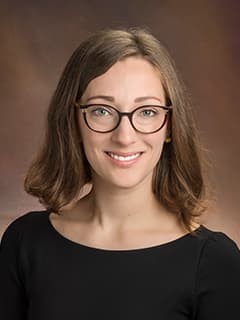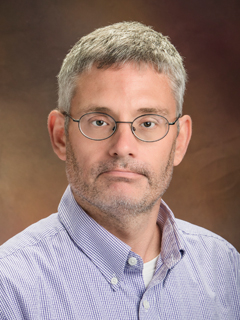HOW CAN WE HELP YOU? Call 1-800-TRY-CHOP
In This Section
CART38, a Novel Therapy for T-ALL: Q&A With David Teachey, MD, and Caroline Diorio, MD
Editor’s Note: Supporting CHOP’s vision to be the global leader in pediatric cell and gene therapy discovery and treatment is the Cell and Gene Therapy Collaborative. The CGTC aims to significantly increase the number of potential new pediatric cell and gene therapies that are the product of CHOP-led research, and to accelerate the pace of clinical development to provide new therapies to children. One way they’re doing this is through the Cell and Gene Therapy Seed Grant program, which is designed to promote early-stage development of new ideas in either the engineered cell therapy or gene therapy space — with the goal of achieving preclinical proof of concept by the end of the grant period.
In this three-part Q&A Cornerstone series, we’re highlighting the 2023 recipients of this mentoring grant. Today’s posting, in recognition of National Mentoring Month, features the CAR T-cell research and partnership of David Teachey, MD, co-leader of the Immune Dysregulation Frontier Program and director of Clinical Research for the Cancer Center, and Caroline Diorio, MD, an attending physician with the Cancer Center at CHOP.

Caroline Diorio, MD
Can you describe the cell therapy project you’re working on and the context for its development?
Dr. Diorio: Our project is focused on CART38, a novel therapy for T-ALL. Acute lymphoblastic leukemia (ALL) is the most common pediatric cancer, affecting more than 3,000 children in the United States each year. Despite significant improvement in overall survival for children with relapsed or refractory (r/r) B-cell ALL, current treatments for children with r/r T-cell ALL (T-ALL) are ineffective. Chimeric antigen receptor (CAR) T-cells have revolutionized the treatment of r/r B-cell ALL but have yet to be translated to T-ALL.
Our first aim is to evaluate the safety and feasibility of targeting the cell surface marker CD38 for immunotherapy in patients with T-ALL. Because this is a new CAR-T, there are unique toxicities that we anticipate because we’re targeting a T-cell leukemia instead of a B-cell leukemia. So, the second half of our grant is devoted to understanding two CAR T-side effects: immune effector cell-associated neurotoxicity syndrome (ICANS) and cytokine release syndrome (CRS) for CART38 and other CAR T-cells, like CART19.
Dr. Teachey: It’s bench to bedside and back again. This is a highly collaborative project to try to get novel and innovative therapies to kids because it’s an unmet need — when T-ALL patients relapse, they almost uniformly do not survive. We need new treatments. We are very excited about several CAR-T trials for T-ALL and T-cell lymphoblastic lymphoma (T-LL) opening very soon for children and young adults with relapsed or refractory disease.
This includes CD38 CAR-T which was developed as a collaboration between CHOP and the University of Pennsylvania, and CD7 CAR-T developed as a collaboration between CHOP and BEAM Therapeutics. CD38 CAR-T was developed in a highly collaborative group including Drs. Carl June, Saar Gill, Richard Aplenc, Tina Glisovec-Aplenc, and Sarah Tasian. The goal is to translate CD38 CAR into the clinic for other diseases too, including acute myeloid leukemia and multiple myeloma.
We are also taking what we have learned from the basic science to understand why patients get CRS and ICANS, and why some children get these problems after CAR-T, and that will lead to new therapies to treat CRS and ICANS. It’s not just understanding the biology, but also about developing new ways of preventing CRS and ICANS.
How will your seed grant project drive cell and gene therapy science and/or therapeutics forward? What future clinical impact could your research have?
Dr. Teachey: Hopefully it will be a new effective treatment for children with relapsed T-ALL. If we find it’s highly effective in the relapse setting, the goal would then be to move it to the front line in higher-risk patients to prevent them from relapsing in the first place. A big advantage of CART38 is it has the potential to be used in a lot of different malignancies, as many hematologic (blood-based) cancers are CD38 positive.
We know some children and young adults get very sick after treatment with CAR T-cells, but we need to find out if the biology of the side effects is the same across diseases. This will help us learn better ways to prevent and treat toxicity in patients who are critically ill. It really has the potential to impact patients directly in a short period of time.
After the completion of this grant, what do you see as next steps?
Dr. Teachey: I look at seed grants as an investment. The data we generate from this grant should lead to larger National Institutes of Health (NIH) grants and larger grants from private foundations, enabling us to continue to expand upon the science to improve the way we treat children with T-ALL and T-LL.
And for Caroline as a junior investigator, the preliminary data will help her build out her own research program. The goal is to help her transition to be her own independent faculty member doing her own research.
Why do you think the pairing of scientists at different levels of their career is important, particularly for the cell and gene therapy space, a field that has come a long way in the last few years but is still relatively cutting edge? How does this type of collaboration enhance your team’s work?
Dr. Teachey: Having people from different generations tackle a problem allows for novel ways to think about a problem. The old generation brings the wisdom and experience of doing something for a long time. But the young generation brings a fresh, new way of looking at it. If you tackle a problem from both angles, you have a higher chance of success. Plus, it gives a superstar like Caroline the ability to generate preliminary data, to learn how to bring stuff from bench to bedside, and to develop the tools needed so she can lead her own research program and be the next generation driving the field.
There are a lot of complexities in translating science. There’s the scientific part of it, of course, but then there’s everything involved in regulatory drug development. This includes working with the Food and Drug Administration, the NIH, and other external regulatory bodies, as well as working local regulatory bodies such as the Institutional Review Board (IRB). We are extremely fortunate at CHOP to have an exceptional, collaborative IRB, chaired by Barbara Engel. We are also fortunate to be in a Cancer Center that invested in a regulatory support team called the protocol support office.
But those things are hard to navigate when you’re young and have never done it before. So, it helps to get mentored by somebody who’s learned how to navigate those systems and avoid the roadblocks. It’s easy to get stuck at a regulatory place that pauses things, and then science can flounder for years.
The cell therapy team, built by Dr. Stephan Grupp, through investment from CHOP has been transformational and makes Caroline’s and my life a lot easier. If you dig into it, all major breakthroughs in science and medicine have required partnerships between doctors and scientists, nurses and regulatory specialists, funders and industry, the young and the old. It really takes a village.
Dr. Diorio: And for the inverse of what Dr. Teachey said, at my stage, it’s easy to be ultra-focused. But having somebody who’s senior to you can help you see the bigger picture — not just what’s right in front of your face, but say the next six months, one year, five years. That’s extraordinarily helpful, both in moving the science forward and moving things into the clinic. I wouldn’t know what was here if Dr. Teachey wasn’t around to introduce me to other scientists and collaborators and the many resources that CHOP has to offer.
How does the culture, mission, and capabilities of CHOP’s Research Institute foster collaborative cell and gene therapy projects such as yours?
Dr. Teachey: CHOP recognized early on that cell and gene therapy was cutting edge, innovative, and was curing kids who were previously uncurable. CHOP made the wise decision to invest in it. CHOP is a unique place in many ways because it recognizes the value of hard-core basic science, translational science, and clinical science. And this field doesn’t move forward unless you invest in all of those.
Dr. Diorio: CHOP is a very supportive place to do cell and gene therapy research and an outstanding institution. There are an incredible number of experts in the field here, and they are all generous with their time. There aren’t many places where you can knock on the door of an expert like Dr. Sarah Tasian or Dr. Richard Aplenc or Dr. Stephan Grupp or Dr. Teachey and get an, “Of course, I’ll help you with whatever your question is.” Just the number of experts here and their absolute generosity with their time and their knowledge is one of the amazing parts of CHOP.




